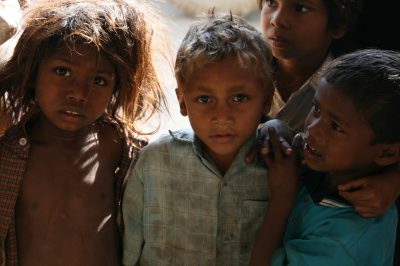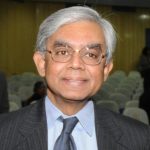By
Satyabrata Pal
Across the board, it seems to be the astonishing view of the State and its institutions that racial and caste prejudice is a safety-valve, which they dare not turn off.
There is a famous story in the UN about the three senior officers of an Indian Army contingent sent to Sierra Leone in 2000 for a peacekeeping operation, men from Himachal, Darjeeling and Tamil Nadu, whom the rebel leader refused to believe were Indians. He thought the Pahari was European, the Gurkha Chinese and the Tamil one of them. Since West Africans are racially homogenous, and the only “Indians” most of them have seen are the descendants of Gujarati traders, sallow-skinned and aquiline, he was naturally bewildered by men who claimed to be Indians, though none of them looked like each other or like the Indians he had known. “Where”, he asked suspiciously, “are the Indians?”
That delightful befuddlement in the African bush sums up the infinite variety that makes India unique. While we boast that India is a sub-continent, not just a country, our diversity makes us not just a sub-continent, but a microcosm of the world. That is something to marvel at, to cherish and to celebrate. It is the greatest pity, therefore, that so many Indians too have such false and narrow ideas of what and who an Indian is, that they too exclude Indians who do not fit into their bigoted and ignorant mould. We truly are a rainbow nation, even more than the South Africans who now proudly say this about themselves, but many Indians would much rather not have this brilliant range of Indianness, they would prefer the synthesis of white.
That obsession with the “fair and lovely”, as if only the fair can be lovely, reflects the dark and ugly side of India, and a deep inferiority complex, possibly rooted in our colonial experience, though other races, including the African, which have suffered as much, have no such delusional aspirations. Tragically, it sets off paroxysms of racism against Africans in India. For decades, African students have studied on scholarships in India, but very few carry fond memories of their stay; they speak with sadness of isolation, of being met by suspicion, contempt and fear. Tagore pilloried the Indian phobia about colour in a superb poem on the beauty of a village girl: the villagers call her black, he wrote, I call her krishnakoli. They would still call her black, and despise her for being darker than them, though she might well claim descent from royalty, since Bengal was briefly ruled by an African dynasty in the 15th century.
The Indians who despise Africans as culturally inferior because they are darker draw their lineage to Gandhi, who once described his campaign on behalf of the South African Indians as a “continued struggle against degradation sought to be inflicted upon us by the Europeans, who desire to degrade us to the level of the raw Kaffir, whose occupation is hunting and whose sole ambition is to collect a certain number of cattle to buy a wife with, and then pass his life in indolence and nakedness.”
That someone like Gandhi could disparage Africans in such crude terms shows how deep-seated our prejudices are. It is, sadly, not the only crass and cruel manifestation of extreme prejudice in India, though Article 15 of the Constitution prohibits “discrimination on grounds of religion, race, caste, sex or place of birth.” The International Convention on the Elimination of Racial Discrimination, which India has ratified, having helped to draft it, prohibits “any distinction, exclusion, restriction or preference based on race, colour, descent, or national or ethnic origin which has the purpose or effect of nullifying or impairing the recognition, enjoyment or exercise, on an equal footing, of human rights and fundamental freedoms in the political, economic, social, cultural or any other field of public life.” Each one of the prohibitions of the Constitution and the Convention is honoured more in the breach than the observance in India.
The laws enacted and institutions set up to end discrimination and protect victims are overwhelmed by the prejudices that permeate our society. The two National Commissions, for Scheduled Castes and for Scheduled Tribes, established by the Constitution, are voices in the wilderness, almost powerless to help. The National Human Rights Commission holds public hearings in areas where this discrimination is most rampant, to offer redress to victims and to educate them about their rights, but this is like trying to drain an ocean with a colander. The Scheduled Castes and Scheduled Tribes (Prevention of Atrocities) Act details the endemic practices that are now crimes, spelling out how they should be prevented, how victims should be protected and their tormentors punished, but most civil servants either do not know the law, or wilfully ignore their duties under it, or argue that there would be riots if they enforced it. Only a fraction of the crimes committed against the scheduled castes and scheduled tribes is recorded by the police, only a further fraction is investigated diligently enough to end in a charge- sheet, a minuscule percentage of these is prosecuted with any vigour, and acquittals are therefore common. Across the board, it seems to be the astonishing view of the State and its institutions that racial and caste prejudice is a safety- valve, which they dare not turn off.
Part of the problem clearly stems from the fact that, uniquely among the world’s great religions, Hinduism, which most Indians practice, is founded on a two-fold discrimination. While others lay down different standards for believers and non- believers, only Hinduism also discriminates between those who practice the same faith. The pernicious system of caste, so central to the Hindu weltanschauung, poisons and narrows the minds of many Indians. They read in the Bhagavad Gita, for instance, that the loss of dharma breeds impiety, if women are impious there is an intermingling of castes, a confusion of castes leads to hell. The spirit of Arjuna breathes through the khap panchayat. Honour killings can invoke heroic sanctions.
A brilliant and profound report prepared for the NHRC on the status of Scheduled Castes in India held that “the entire issue of curbing violence against Scheduled Castes is not simply one of effectively administering criminal justice and punishing the offenders, but involves massive transformation of a society steeped in the social legacy of centuries…. what was not quite foreseen, at least not so vividly, was that the battle for this transformation would be so hard and brutal, vested interests so entrenched and institutions of governance so fragile to deal with the forces involved.”
Compounding this is the fact that, until recently, most Indians rarely travelled out of their States, marrying only within their language group and in their caste. The only traditions and culture they learnt were those of their linguistic group. Everything else was alien. In the Bengal that I grew up in, India was divided between Bengalis and non-Bengalis. Anything not Bengali was outré. It needed no further definition. The words used in polite Calcutta society for the workers from UP, Bihar and Odisha were all derogatory, the counterparts of “nigger” in the US of the 20th century. Whereas it would now be unthinkable to use that word in the US to describe a black man or woman, Bengalis still think nothing of using their equivalents for their neighbours. What is true of Bengal is, I am sure, true of the other States as well. We are blind and deaf to the pain we casually cause others, and particularly to those whose insecurities and sensitivities a caring society should be most solicitous of.
The Sachar Committee, set up in 2005 to study “the social, economic and educational status of the Muslim community of India”, began its report with the bold and absolutely true assertion that “in any country, the faith and confidence of the minorities in the functioning of the State in an impartial manner is an acid test of its being a just State”. Its conclusions therefore were deeply troubling. The Committee found that “the Community exhibits deficits and deprivation in practically all dimensions of development. In fact, by and large, Muslims rank somewhat above SCs/STs but below Hindu-OBCs, Other Minorities and Hindu- General (mostly upper castes) in almost all indicators considered…. In addition to the ‘development deficit’, the perception among Muslims that they are discriminated against and excluded is widespread, which exacerbates the problem.”
That Muslims, and other minorities, have this perception is of no interest to the majority, settled in its belief that its insularity and brutality have the sanction of holy writ. Any pain their victims suffer from the discrimination they experience is their karma, also divinely ordained.
In the sporadic debate about the Armed Forces Special Powers Act, it is rarely accepted as a point of concern that this law, a blot on our democracy, is in force only in the North-East and in J&K. These lands are part of India, but most Indians do not quite see those who live there as Indians; the tribes of the North-East are uncomfortably like the Chinese, the Kashmiri Muslims are closet Pakistanis. However, the fact that the Army, whose primary mission is to fight enemy soldiers, is used against only these citizens of India deepens the conviction in these States that the rest of India sees them as hostile foreigners. And that the Army has an impunity to act against them that it would not enjoy in a war against a foreign force only deepens their alienation.
The report of the Justice Verma Committee, set up after the particularly egregious gang-rape in New Delhi in 2012, reminded us that the victims of discrimination in India suffer cruelties in every aspect of their identities, including for their sex, ethnicity and religion. It noted bluntly that “the brutalities of the armed forces faced by residents in the border areas have led to a deep disenchantment, and the lack of mainstreaming of such persons into civil society. Serious allegations of persistent sexual assault on the women in such areas and conflict areas are causing more alienation. The nation has to account for the tears of millions of women and other marginalized sections of the society which has been ignored owing to institutional apathy.”
Whether society can be shaken out of its apathy remains to be seen, but it cannot be allowed to inflict so much suffering in a smug trance. The first step must be to hold a mirror up to society, and to persuade it to look into it. Mirror, mirror on the wall… This means detailing the horrors that it sleepwalks through. It means putting together the facts and figures that establish the range and depth of discrimination in our country, forcing society to listen to the traumas and the anguish of those whose lives it has blighted. Initiatives like the Delhi-NCR Discrimination Survey Report are therefore invaluable. They need to be supported. Even more, they need to be read, heeded, understood, and above all, acted upon.
This article was reproduced with the kind permission of Our Stories and was originally published here



No Comments Yet!
You can be first to comment this post!